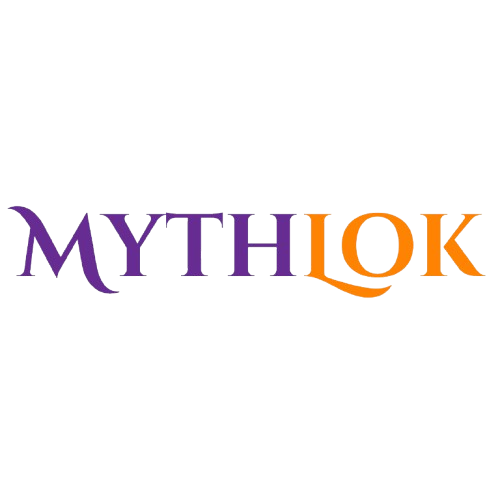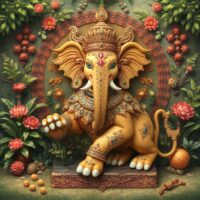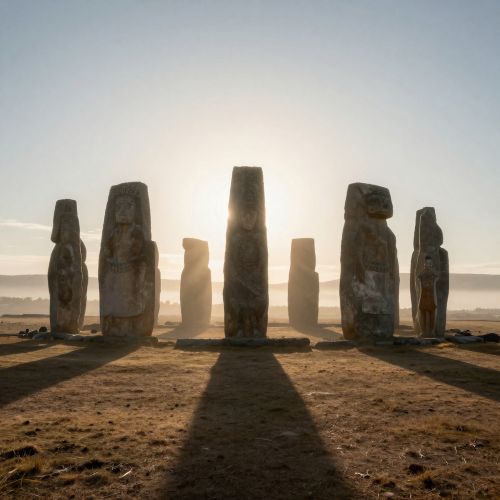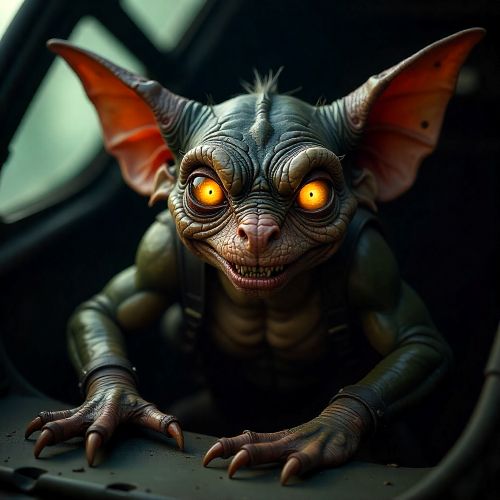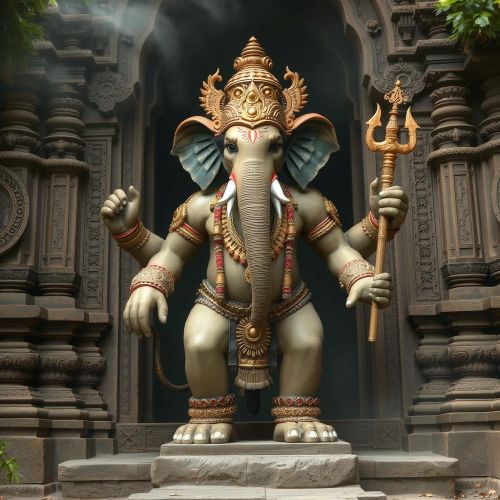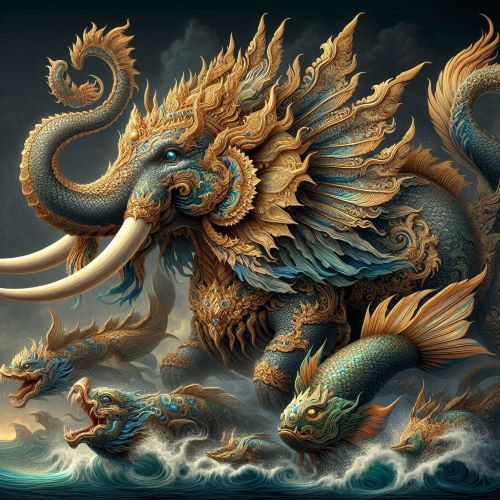Kochasi : The Hybrid Protector
Listen
At a glance
| Description | |
|---|---|
| Origin | Thai Mythology |
| Classification | Hybrids |
| Family Members | N/A |
| Region | Thailand |
| Associated With | Protection, Intelligence, Strength |
Kochasi
Introduction
Kochasi is a fascinating yet lesser-known figure in Thai mythology. This unique creature, a hybrid of a lion’s body and an elephant’s head, is deeply rooted in Thai folklore. Unlike more widely recognized mythological beings, Kochasi’s stories often blend Buddhist teachings with regional legends, giving it significant cultural importance. The creature’s striking form not only captures attention but also symbolizes key virtues in Thai culture, such as wealth, prosperity, and communal support. As a symbol of abundance, Kochasi plays an important role in rituals and practices aimed at ensuring a prosperous life.
Physical Traits
Kochasi is depicted as a majestic creature with the body of a lion, symbolizing strength and nobility, and the head of an elephant, representing wisdom and intelligence. The lion’s powerful build and regal mane evoke courage and dominance, often associated with royalty, while the elephant’s head signifies traits like longevity and memory, which are highly valued in Southeast Asian traditions. Intricately adorned with jewelry and vibrant garments, Kochasi’s visual representation reflects Thailand’s rich artistic heritage. These elaborate designs not only enhance its appearance but also emphasize its connection to wealth, generosity, and prosperity, making Kochasi a striking symbol in Thai culture.
Family
In Thai mythology, Kochasi is sometimes seen as part of a broader family of deities that influence different aspects of life, particularly fertility, abundance, and agriculture. While not always directly linked to specific divine figures, Kochasi’s association with these forces reinforces its role in promoting prosperity and communal well-being. This interconnectedness reflects the harmony sought between the divine and mortal realms, particularly in areas related to wealth and abundance.
During rituals, Kochasi’s significance extends beyond itself, as worshippers often honor both Kochasi and related deities, creating a sense of unity and cultural identity. Kochasi is also connected to Himavanta, the mythical forest home to many legendary beings. As a guardian of sacred spaces within this realm, Kochasi maintains balance and order among its inhabitants. Its connections with other hybrid creatures, like the Kinnaree (half-woman, half-bird) and the Naga (serpent deities), further highlight its importance in Thai mythology, where each plays a vital role in maintaining cosmic harmony.
Other names
Kochasi is recognized by various names that highlight its significance and characteristics across different regions of Thailand. In certain traditions, it is called Khun Pat or Phra Phong, names that evoke themes of abundance and prosperity. This versatility allows communities to connect with Kochasi in ways that align with their local customs and beliefs.
The range of names attributed to Kochasi underscores its wide-reaching influence. Each name carries unique cultural connotations, reinforcing the deity’s importance within Thai mythology and its celebration across diverse communities. Additionally, Kochasi is sometimes referred to as “Singha-hathi” (lion-elephant) or “Kosa-hati,” terms that emphasize its hybrid nature, showcasing the majestic qualities of both the lion and the elephant.
Powers and Abilities
Kochasi is highly esteemed for its remarkable powers, closely linked to its representations of wealth and wisdom. Devotees often call upon Kochasi during rituals designed to attract prosperity, ensure fruitful harvests, and promote financial success. Many believe that seeking the deity’s blessings before embarking on new ventures can positively impact their endeavors.
In addition to attracting good fortune, Kochasi is thought to dispel misfortune and negative energies, fostering harmony in both personal and community settings. This protective quality encourages a culture of generosity and mutual support, reflecting the communal values inherent in Thai society. By invoking Kochasi, worshippers aim not just for personal prosperity but also for the well-being of their families and communities.
Kochasi is imbued with various mystical powers. Its lion-like body provides exceptional strength and agility, making it a formidable guardian. Meanwhile, the elephant head enhances its wisdom and grants the ability to communicate with other deities and spirits. Often depicted as a protector of temples and sacred spaces, Kochasi uses its powers to fend off evil spirits and maintain spiritual harmony.
>Modern Day Influence
In contemporary Thailand, Kochasi continues to embody protection and reverence. Statues and carvings of this mythical creature are commonly placed at temple entrances, serving as guardians. Its imagery is prevalent in traditional Thai art and literature, reminding people of the nation’s rich mythological heritage. Furthermore, Kochasi inspires modern storytelling, with adaptations appearing in television dramas and children’s books.
Kochasi’s unique characteristics, powers, and cultural significance highlight the diversity of Thailand’s mythology. Its lasting presence in today’s culture underscores the timeless fascination with mythological figures, captivating the imaginations of new generations. The symbolism of Kochasi is evident in festivals and ceremonies, where it plays a vital role in rituals aimed at attracting wealth and success. Many Thai people honor Kochasi through offerings, especially during important occasions like the Lunar New Year or the planting season.
Moreover, Kochasi’s representation has moved beyond traditional contexts, making appearances in popular culture, art, and literature. Its qualities are often featured in various media, from children’s stories that impart lessons on sharing and community to advertisements that leverage Kochasi’s symbolism to connect with consumers’ aspirations for prosperity. The continued allure of Kochasi reflects a profound appreciation for cultural heritage within modern Thai society. As newer generations engage with these myths and symbols, Kochasi is poised to maintain its significance as a guiding figure in the values and ambitions of the Thai people.
Related Images
Frequently Asked Questions
What is lorem Ipsum?
I am text block. Click edit button to change this text. Lorem ipsum dolor sit amet, consectetur adipiscing elit. Ut elit tellus, luctus nec ullamcorper mattis, pulvinar dapibus leo.
What is lorem Ipsum?
I am text block. Click edit button to change this text. Lorem ipsum dolor sit amet, consectetur adipiscing elit. Ut elit tellus, luctus nec ullamcorper mattis, pulvinar dapibus leo.
What is lorem Ipsum?
I am text block. Click edit button to change this text. Lorem ipsum dolor sit amet, consectetur adipiscing elit. Ut elit tellus, luctus nec ullamcorper mattis, pulvinar dapibus leo.
What is lorem Ipsum?
I am text block. Click edit button to change this text. Lorem ipsum dolor sit amet, consectetur adipiscing elit. Ut elit tellus, luctus nec ullamcorper mattis, pulvinar dapibus leo.
What is lorem Ipsum?
I am text block. Click edit button to change this text. Lorem ipsum dolor sit amet, consectetur adipiscing elit. Ut elit tellus, luctus nec ullamcorper mattis, pulvinar dapibus leo.

